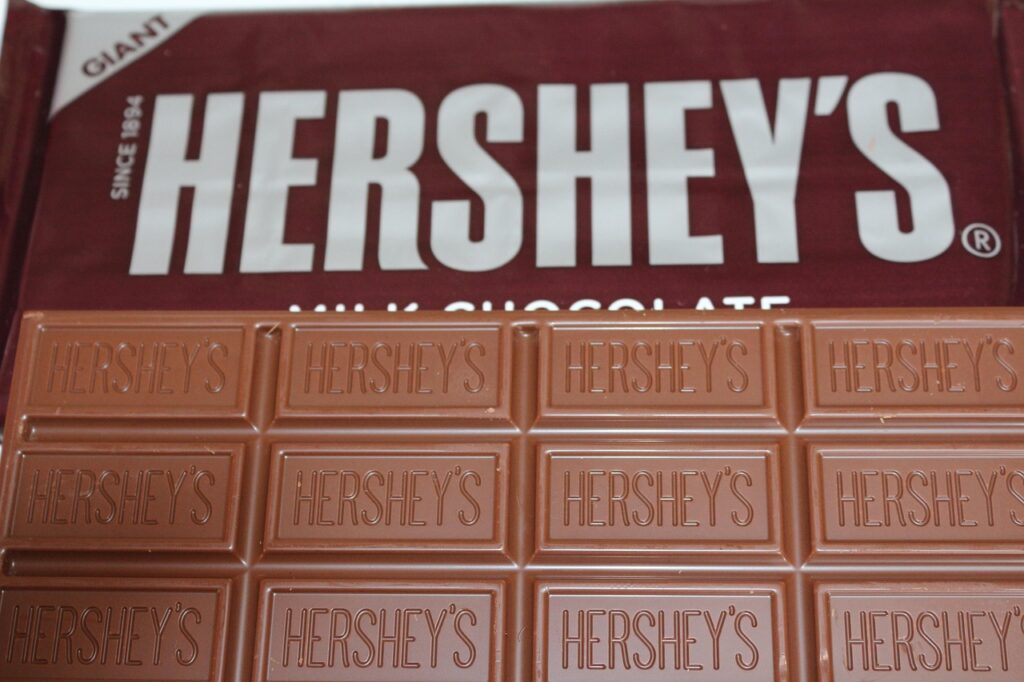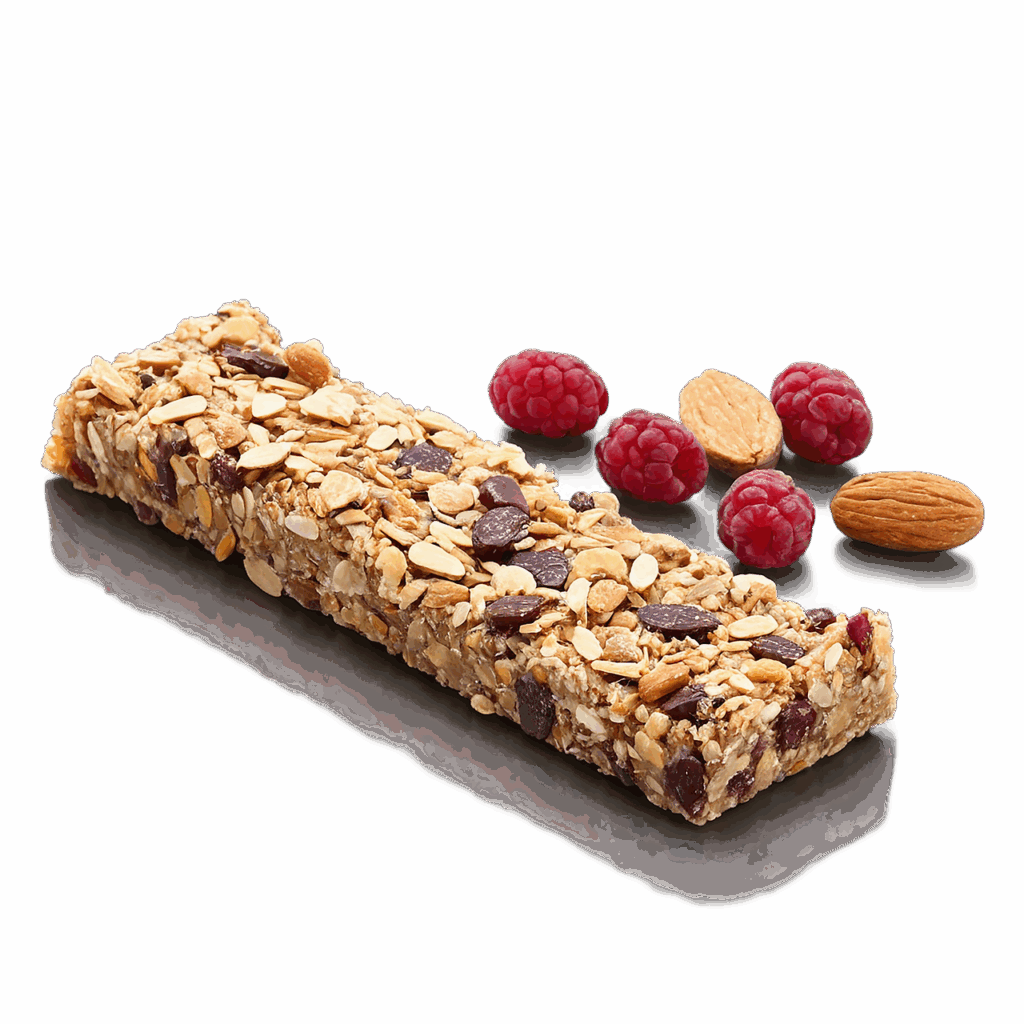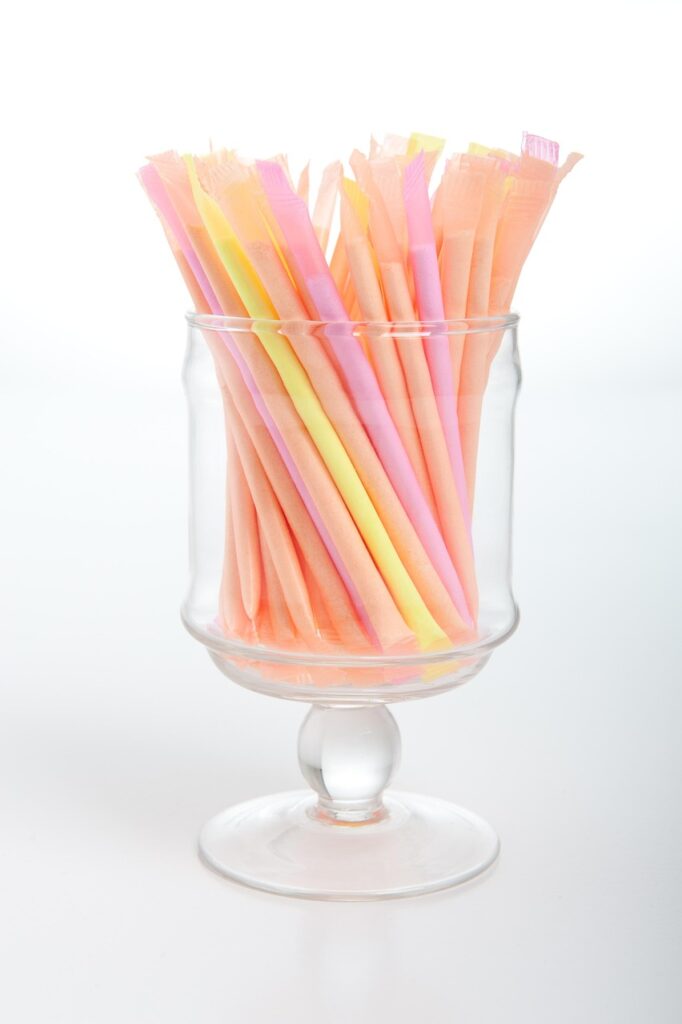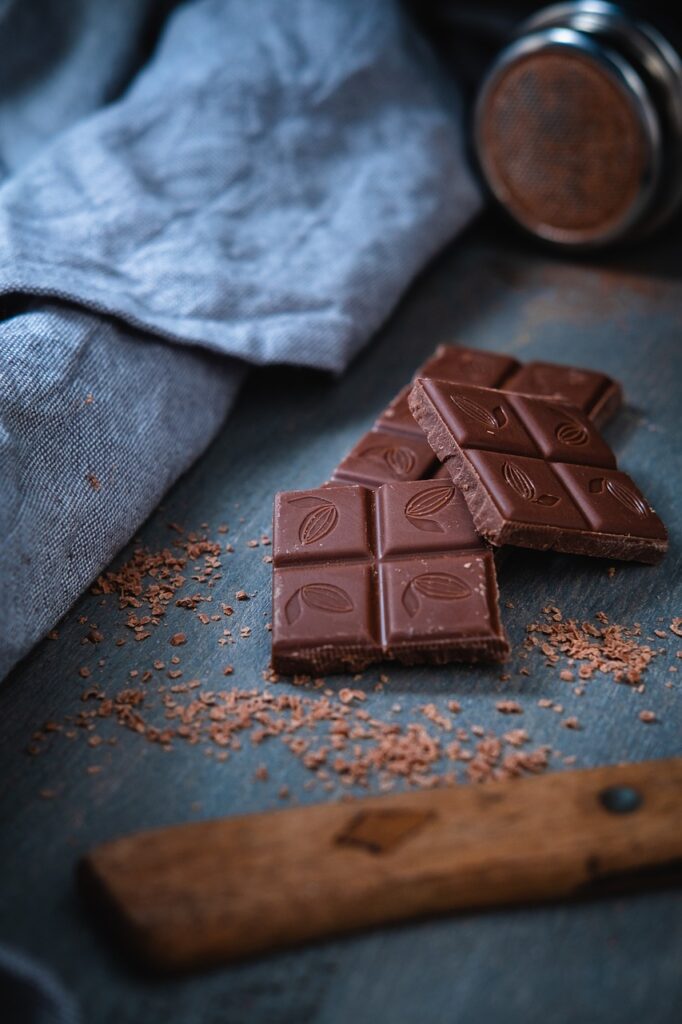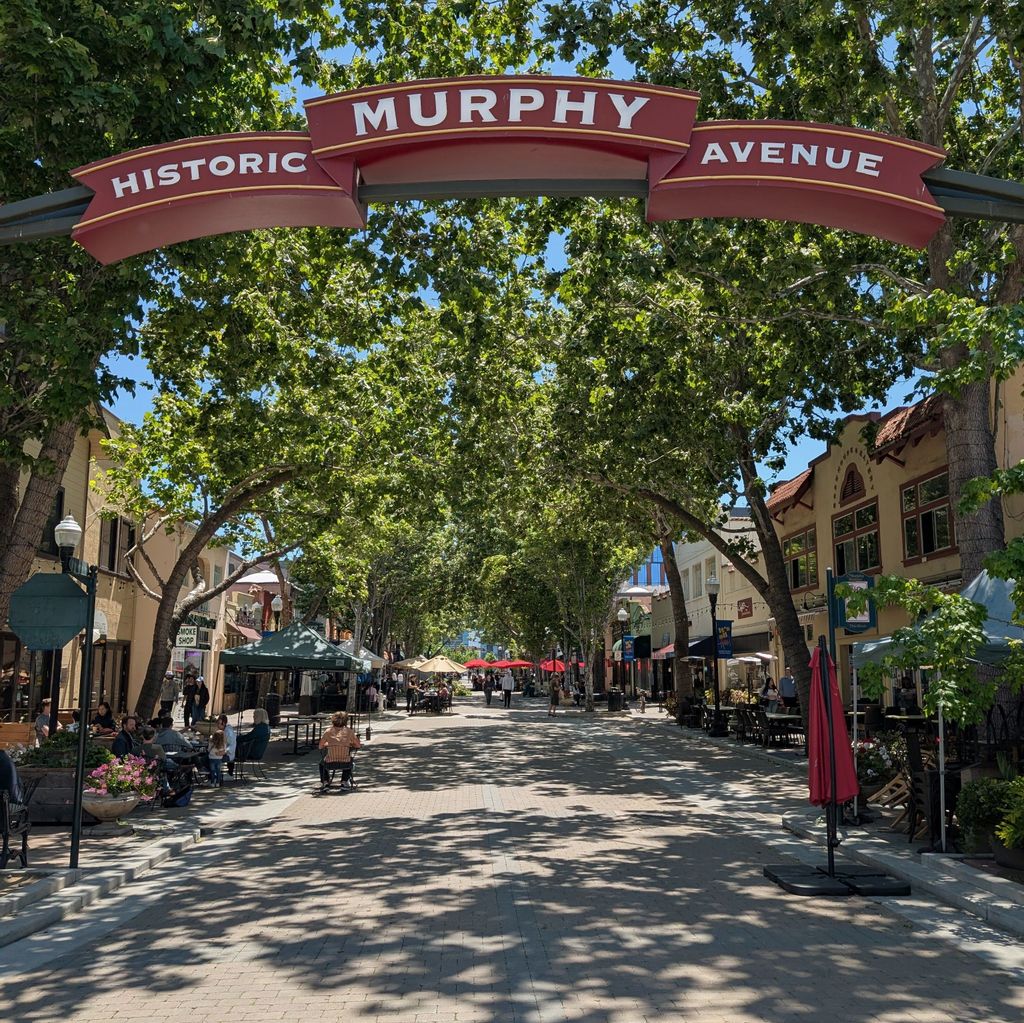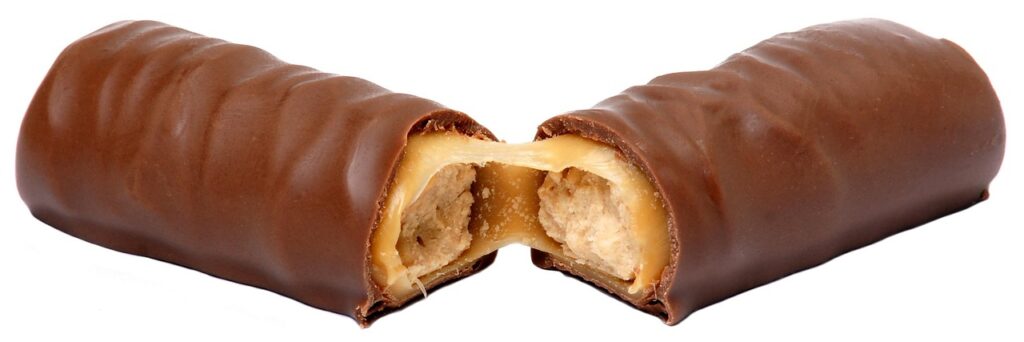
The ’80s. Ah, the decade of big hair, rad mixtapes, and an explosion of pop culture that pretty much seeped into everything – even our candy aisles! If you grew up during this vibrant era, you know that heading to the convenience store was like embarking on a mini-adventure. The shelves were bursting with colorful wrappers, daring new flavors, and treats that felt larger than life, each bite a tiny, sugar-fueled escapade reflecting the creative and wild spirit of the ’80s.
But as much as we cherish those memories, there’s a bittersweet truth about the candy scene of yesteryear: not all delicious candies stood the test of time. While some iconic treats, like E.T.’s beloved Reese’s Pieces, are still around, many other sought-after sweets savored during the ’80s have sadly vanished from our snack racks. Some disappeared due to corporate buyouts, others fell victim to changing tastes, and a few were just a little too ahead of their time. So, grab your Walkman and prepare for a serious dose of sugary nostalgia! We’re about to take a deep dive into 14 legendary candy bars from the 1980s that, for one reason or another, are no longer gracing our convenience store shelves. Get ready to unlock some core memories as we unwrap the stories behind these beloved, yet sadly discontinued, confections.

1. **Hershey’s Bar None**Let’s kick things off with a candy bar that burst onto the scene in 1987 and instantly became the stuff of legends: Hershey’s Bar None. This wasn’t just any chocolate bar; it was, as Hershey’s boldly declared in a 1989 advert, “the supreme chocolate extravaganza.” It promised to “satisfy the chocolate beasty lurking in us all,” and for a glorious few years, it absolutely delivered. This decadent combination of milk chocolate, crispy wafers, crunchy peanuts, and chocolate cream, all smothered in a delicious chocolate coating, was an instant hit.
The satisfying crunch combined with a melt-in-your-mouth texture made it extremely popular with both kids and adults. In Canada, it was even known as the Temptation bar. During its heyday in the late ’80s and early ’90s, the Bar None had a devoted following, with some connoisseurs comparing its texture and flavor profile to a well-known wafer bar. It felt like the ultimate chocolate indulgence, a special treat that elevated your average candy craving to an epic quest.
But alas, the saga took a turn in 1992. In a puzzling decision, Hershey’s changed the original bar, splitting it into two sticks and adding caramel. It seems the public was not amused by this unsolicited makeover, as sales started to decline. By 1997, the once “supreme chocolate extravaganza” was quietly taken off the shelves. Today, for those of us who remember it, the Bar None is a nostalgic reminder of one of the greatest treats of the late ’80s and early ’90s, forever etched in candy history as a cautionary tale of “if it ain’t broke, don’t fix it.”
Read more about: The Unseen Tapestry: Exploring the Rich History and Remarkable Legacies of Women Named Barbara, Featuring Barbara Eden

2. **Wonka Bar**”Come with me and you’ll be in a world of pure imagination!” For anyone who dreamed of finding a Golden Ticket, the Wonka Bar was the ultimate fantasy brought to life. Originally introduced by The Quaker Oats Company in 1971, to coincide with the movie “Willy Wonka and the Chocolate Factory,” this iconic treat initially faced a bumpy start. It was pulled from shelves shortly after its release due to production issues – specifically, the bars kept melting because the recipe wasn’t right.
Fast forward to the late ’80s, and candy lovers everywhere rejoiced when Nestlé purchased the brand and announced its revival! This was a huge deal, especially for fans of the classic film. The bar was rereleased, accompanied by a delightful assortment of other candies inspired by the fantastical world of Willy Wonka. Nestlé even launched a nationwide campaign in the U.S. in 2005, hiding Golden Tickets in five Wonka candies, with one special Wonka Bar offering a grand prize of $10,000 in cash. It was a brilliant marketing move that injected fresh excitement into the brand.
Despite this golden moment, sales for the iconic candy bar eventually dwindled, and Nestlé made the decision to pull it off U.S. shelves in 2010. Even efforts to create more popularity with new flavors in countries like the U.K. couldn’t save it, and the Wonka Bar was ultimately discontinued in 2014. Today, the lament of nostalgic fans trying to convince Nestlé to bring it back echoes through the internet. The Wonka Bar, with its whimsical backstory and a brief, shining moment of Golden Ticket glory, remains a cherished memory for many, proving that some candies aren’t just food; they’re an experience.
Read more about: From Box Office Busts to Beloved Binges: 15 Movie Flops That Became Timeless Cult Classics
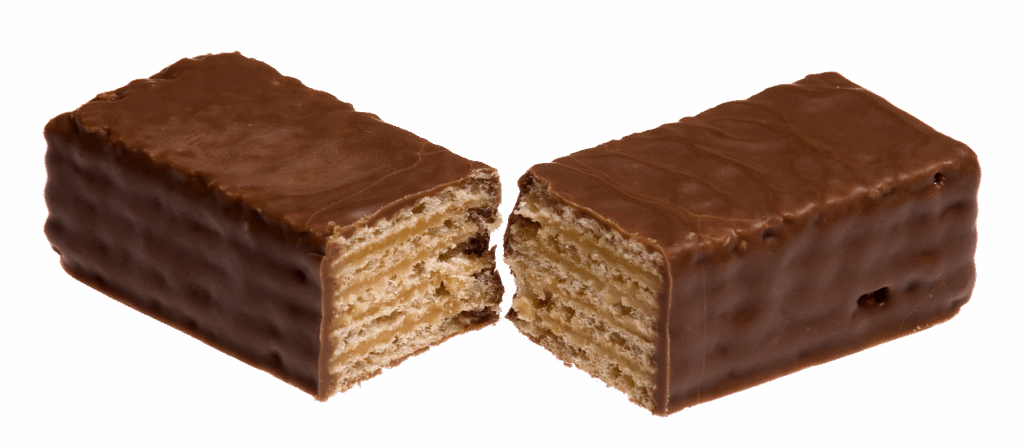
3. **Mr. Bones Puzzle Candy**For as long as candy has existed, parents have probably been telling their kids, “Don’t play with your food!” But then, in the late ’70s, Fleer Company came along and threw a delightful spanner in the works with their utterly unique creation: Mr. Bones Puzzle Candy. This wasn’t just a sugary treat; it was an invitation to fun! Kids could actually build the candy pieces into a skeleton character, none other than Mr. Bones himself. It was quite literally a sweet puzzle, engaging both taste buds and imaginations.
The genius didn’t stop at the edible skeleton. Each Mr. Bones Puzzle Candy came housed in a plastic coffin, which, after the sugary contents were devoured, became a cool little container for whatever treasures or trinkets ’80s kids wanted to store. This added a layer of interactive play that was pretty revolutionary for a candy product at the time. It wasn’t just about the snack; it was about the experience, the creativity, and the joy of turning your food into a toy. Fleer Company, the masterminds behind Mr. Bones, is also credited with bringing bubble gum to the masses, thanks to accountant Walter Diemer’s invention in Philadelphia in 1928.
While bubble gum certainly stood the test of time, poor Mr. Bones didn’t have such a long lifespan. The product was discontinued and never lived past the mid-‘990s, fading into the realm of nostalgic memories. For those of us who spent our childhoods meticulously assembling (and then happily munching) our candy skeletons, its absence is definitely felt. The fond memories of Mr. Bones are so strong that fans have even started a Change.org petition to bring him back to life, though to date, those efforts haven’t been successful. It just goes to show that some candies leave a truly unforgettable impression.
4. **Summit Bar**During the ’80s, the candy aisle was a battlefield of sweet sensations, and for a short but memorable stint, the Summit Bar held its own in the limelight. Introduced by Mars in the late 1970s, what really set this treat apart was its innovative marketing – it wasn’t just a candy bar; it was also promoted as a cookie! This brilliant brown-packaged marvel housed not one, but two crispy wafers, generously covered in chocolate, with roasted peanuts added for that extra textural punch and satisfying crunch. It was a unique profile that stood out from the crowd, actively promoted through various television adverts targeting teens and young adults.
Its popularity as a savored treat endured from its late 70s inception well into the early 1980s. People genuinely loved the mix of wafer, chocolate, and peanuts. However, the Summit Bar faced a critical flaw, one that it shared with the Wonka Bar: it simply couldn’t stand up to the heat and melted easily. This turned a delightful treat into a sticky mess if not properly stored, causing consumer frustration.
Mars attempted a comeback in 1983, relaunching the bar with a promise of a “more chocolatey taste” thanks to “30% more chocolate.” Yet, consumers still complained about the melting issue, often resorting to keeping their Summit Bars in the fridge just to enjoy them. It seemed the public wasn’t quite buying into the new and improved Summit Bar. Ultimately, despite being a truly delicious confection, its inability to keep its cool led to its discontinuation in the mid-1980s. Today, the Summit Bar is just a sweet, crunchy memory for those who grew up in the ’80s.
Read more about: Decoding the Crossover Minefield: 14 Models Motorists Should Absolutely Avoid
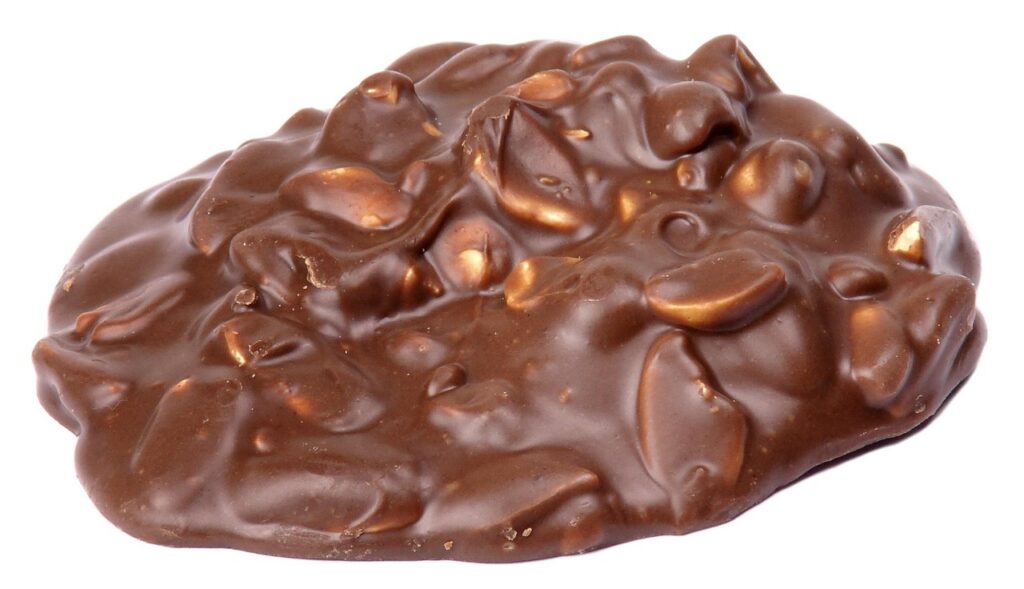
5. **Choco’Lite**In the early 1970s, Nestlé introduced a chocolate bar that was quite unlike anything else on the market, captivating taste buds across New England and the Midwest: the Choco’Lite. It proudly bore the title of the “first puffed milk chocolate bar with crispy chips made in the U.S.,” a claim that immediately piqued curiosity. This wasn’t just another solid slab of chocolate; it promised an entirely new, lighter, and more exciting texture. Advertisements of the era described it as offering “big, thick bites of light and creamy chocolate with crispy chips,” a unique profile that distinguished it.
While it’s often been compared to the Aero Bar due to its aerated milk chocolate texture, it was those distinctive, toffee-like crispy chips that really set the Choco’Lite apart. They provided a wonderful textural counterpoint to the airy chocolate, making each bite a delightful experience. The Choco’Lite wasn’t just a taste sensation; its packaging was a whole vibe. Some versions featured an image of the dark, aerated chocolate against a striking logo, reminiscent of the groovy ’70s aesthetic, and it even boasted a gold foil inner wrapper for a premium feel.
Throughout the ’70s and ’80s, the Choco’Lite’s popularity soared, becoming a beloved staple for many. However, towards the end of the “decade of decadence” – the late ’80s – or as some sources suggest, around 1982, the bar was quietly removed from shelves. This decision left a significant number of fans distraught. In the years that followed, passionate pleas for its return have materialized on social media, but to date, their heartfelt efforts have unfortunately borne no fruit. Despite Nestlé’s vast portfolio of over 2,000 brands today, Choco’Lite remains a cherished memory, a testament to a unique chocolate experience.
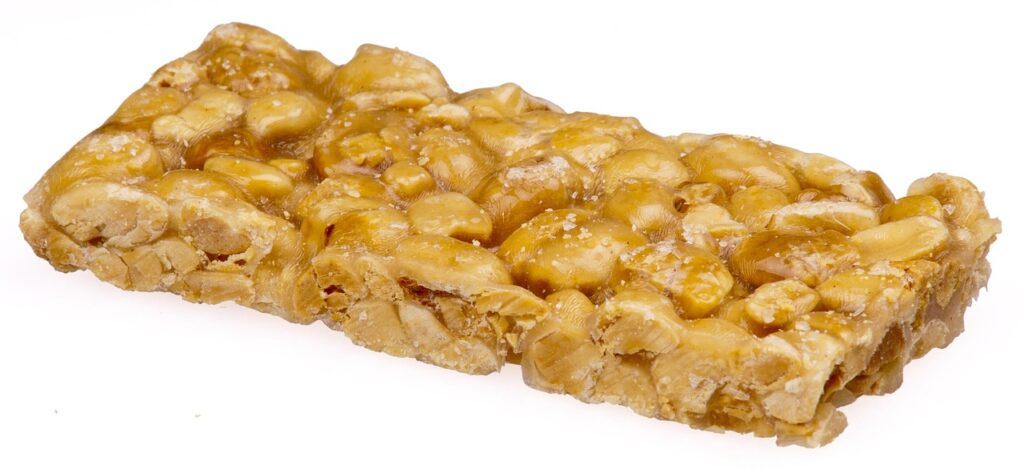
6. **PowerHouse**Before the era of protein shakes and energy bars flooding every grocery store aisle, there was the PowerHouse candy bar, a pioneering treat created by the Peter Paul company in the late 1960s. This wasn’t just another sweet indulgence; it was explicitly designed and marketed as an “energy-packed treat,” a high-protein bar intended to give you a boost. Talk about being ahead of its time! The PowerHouse bar was a robust combination of peanuts, gooey caramel, and rich chocolate, delivering a satisfying bite that truly felt substantial.
It enjoyed a popular run that lasted for more than 20 years, endearing itself to consumers who appreciated its hearty profile and energy-boosting claims. For many, it was the perfect pick-me-up, a delicious way to refuel during a busy day, long before the term “energy bar” became a common lexicon. The Peter Paul company itself has a storied history, founded in 1919 by Armenian immigrant Peter Paul Halajian and five of his Armenian friends. They are perhaps even better known for their other iconic candy bar creations: Mounds, first made in Connecticut in 1920, and Almond Joy, which followed in 1948.
What truly made the PowerHouse unique was its forward-thinking approach to marketing. It wasn’t just about satisfying a sweet tooth; it was about providing functional fuel. Advertised as an “energy booster,” it resonated with consumers looking for something more substantial. This focus on an “ahead of its time” high-protein message contributed to its enduring popularity through the ’70s and much of the ’80s. However, corporate changes led to its demise: in 1978, Peter Paul merged with Cadbury, and in 1988, Hershey’s acquired the U.S. division. Following this acquisition, the PowerHouse bar was, sadly, discontinued in the late ’80s, leaving behind a legacy as a trailblazing energy-packed treat.
Read more about: Decoding ‘Woke’: A Deep Dive into the Term’s Origins, Evolution, and Its Reshaping of Business and Political Discourse

7. **Milkshake Bar**Before the days of Instagram-worthy milkshakes, there was a candy bar that aimed to capture the essence of that creamy, dreamy drink in solid form: the Milkshake Bar. Produced by the Hollywood Candy Company, this delightful confection was originally created in the 1920s with a clear ambition – to rival the burgeoning popularity of the Milky Way candy bar. Both shared a delicious foundation of caramel, nougat, and milk chocolate, setting the stage for a sweet showdown.
But the Milkshake Bar wasn’t content to simply mimic its competitor. It carved out its own niche with two distinct elements that truly made it a standout: a fluffier and lighter texture, and its signature malted nougat. This malted twist gave it an authentic “milkshake” flavor that truly distinguished it. It was so successful at emulating its namesake that candy lovers often treated them like an ice cream bar during the summer months, placing them in the freezer for a refreshing, solid, and utterly unique cold treat.
The Hollywood Candy Company, founded by Frank Martoccio, who was also involved in a pasta noodle business, was originally located in Hollywood, Minnesota, inspiring its catchy name. Martoccio was a prolific candy creator, also producing the beloved PayDay bar. The Milkshake Bar enjoyed a long and popular run in the candy aisle, a testament to its deliciousness and unique appeal. However, its sweet journey came to an end in 1988 when the Hollywood Candy Company was sold to the Leaf Candy Company. Following this acquisition, all candy originally produced by Hollywood Candy Company was phased out, with the notable exceptions of the enduring Zero Bar and PayDay. And so, the Milkshake Bar, a truly well-loved chocolate treat, was pulled off the shelves, becoming another casualty of a corporate buyout.
Read more about: Remembering the Beloved Stars of ‘Happy Days’ We’ve Sadly Lost: A Tribute to Their Legacies
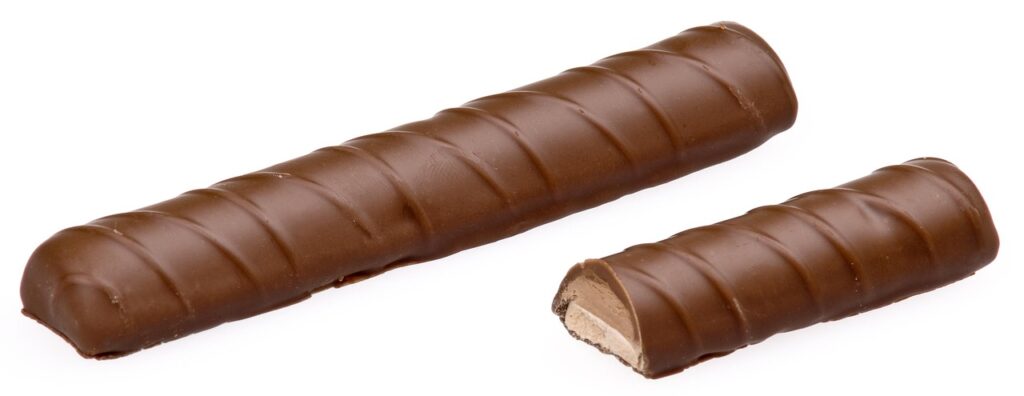
8. **Dina-Sour Eggs**Dinosaurs were *huge* in the ’80s, even before the ‘Jurassic Park’ franchise stomped onto the scene! Scientists were constantly unearthing new species, sparking the imaginations of kids everywhere. Cartoons were packed with prehistoric pals, model kits let you build your own dino armies, and naturally, the candy industry wasn’t about to be left out of this epic craze. Enter the Willy Wonka Brand, which, in 1981, hatched one of the coolest ’80s treats: Dina-Sour Eggs.
These weren’t just any candy; they were ‘giant sour jawbreakers,’ a claim proudly touted in their advertising! Kids absolutely loved the idea that these flavorful eggs could last for an astonishing 60 minutes. Willy Wonka himself declared them his ‘biggest breakthrough,’ and who were we to argue with the master? You could grab them individually or in a twin pack, and they even had a mascot – the aptly named ‘Dee Dee DinaSour.’ It was the ultimate prehistoric sugar rush, bringing a taste of the Mesozoic era to our playgrounds.
However, like actual dinosaurs, the Dina-Sour Eggs eventually started to shrink and fade. By 1987, they were no longer boasting their ‘giant jawbreaker’ status, and their size had noticeably dwindled. The once mighty Dee Dee DinaSour quietly disappeared from packaging as well. It’s almost poetic, isn’t it? A candy inspired by giants that couldn’t escape its own shrinking fate.
By the 1990s, Dina-Sour Eggs joined the ever-growing list of discontinued candies, becoming yet another treasured memory for those of us who grew up with them. Today, for dedicated collectors of ’80s memorabilia, even the original packaging can fetch a surprising price on online marketplaces. We might never know what *real* dinosaurs tasted like, but the grape, orange, cherry, and lemon mix of Dina-Sour Eggs was, for a glorious time, simply T-Rex-cellent!
9. **Space Dust (also known as Cosmic Candy)**Alright, so if you were a kid in the ’70s, you probably remember when popping candy completely blew everyone’s minds with the arrival of Pop Rocks. It was like magic in your mouth! But General Foods, the masterminds behind Pop Rocks, weren’t content to just sit back and watch; a few years later, they launched an even finer, more ethereal version: Space Dust. It was basically Pop Rocks’ cool, powdery cousin, delivering the same fizzy explosion but with a slightly different texture that felt, well, *cosmic*.
Kids went absolutely wild for Space Dust! It was the kind of candy that felt like a science experiment and a treat all rolled into one. However, while kids were busy making their mouths crackle, some parents started to raise an eyebrow. The name ‘Space Dust’ sounded a little too close to ‘Angel Dust,’ a notorious illegal drug at the time, and its powdery appearance certainly didn’t help ease concerns. It was a classic case of an innocent treat getting caught in a pop culture misunderstanding.
General Foods, wanting to keep the peace and the sales going, quickly pivoted and rebranded the candy as ‘Cosmic Candy.’ Smart move! But the popping candy category wasn’t out of the woods yet. Whispers started circulating – scary rumors about kids’ stomachs exploding if they dared to mix the candy with soda. Can you imagine the playground chatter? General Foods had to literally take out advertisements to debunk these wild urban legends, trying to reassure worried parents that their kids wouldn’t spontaneously combust after a fizzy drink and a packet of Cosmic Candy.
While its more solid sibling, Pop Rocks, managed to survive these dramatic sagas and is still available today, Space Dust (or Cosmic Candy, if you prefer) sadly exited the candy universe in the 1980s. It was a victim of both unfortunate naming and persistent, though unfounded, rumors. Still, for a brief, glorious period, it allowed us to taste the stars, one sparkly pop at a time. It’s a bittersweet memory of a treat that was perhaps a little too revolutionary for its own good.
10. **Topps Bubble Gum in a carton**Okay, prepare for a blast from the past that’s less about flavor and more about pure, unadulterated *vibe*. In the ’80s, Topps Bubble Gum decided to think outside the traditional wrapper and packaged their gum in what looked exactly like a miniature juice carton! This wasn’t just any ordinary gum; it was an ‘odd-looking candy creation’ that instantly captured attention. It came in various ‘juice’ flavors like grape, apple, and orange, though let’s be real, the flavor wasn’t the main event.
Pouring out of these quirky cartons were small bits of bubble gum that resembled, well, ‘small rocks or fish tank gravel.’ It sounds wild, right? But for ’80s kids, this was undeniably cool. It was interactive, it was unexpected, and it made you feel like you were getting something truly unique from the candy store. The packaging was everything, turning a simple piece of gum into a miniature experience, a tiny piece of performance art in your lunchbox.
Here’s the thing about Topps Bubble Gum in a carton: its flavor was notoriously short-lived. We’re talking about a mere 30 seconds before that fruity burst completely vanished. But did anyone care? Nope! Its sheer novelty and presentation more than made up for its fleeting taste. Its popularity soared throughout the ’80s, making it a staple for many, proving that sometimes, the packaging is indeed the star of the show. It was a prime example of ’80s aesthetic meeting candy aisle innovation.
While these iconic candy cartons have long since been taken off the shelves, their distinctive packaging still pops up on online marketplaces like eBay. Just a friendly warning, though: those vintage pieces of gum are definitely not ‘fit for consumption’ today! They serve as a vibrant, albeit stale, reminder of a time when candy was as much about the experience and the look as it was about the taste. It truly was a unique, visual candy moment that screams ’80s nostalgia.
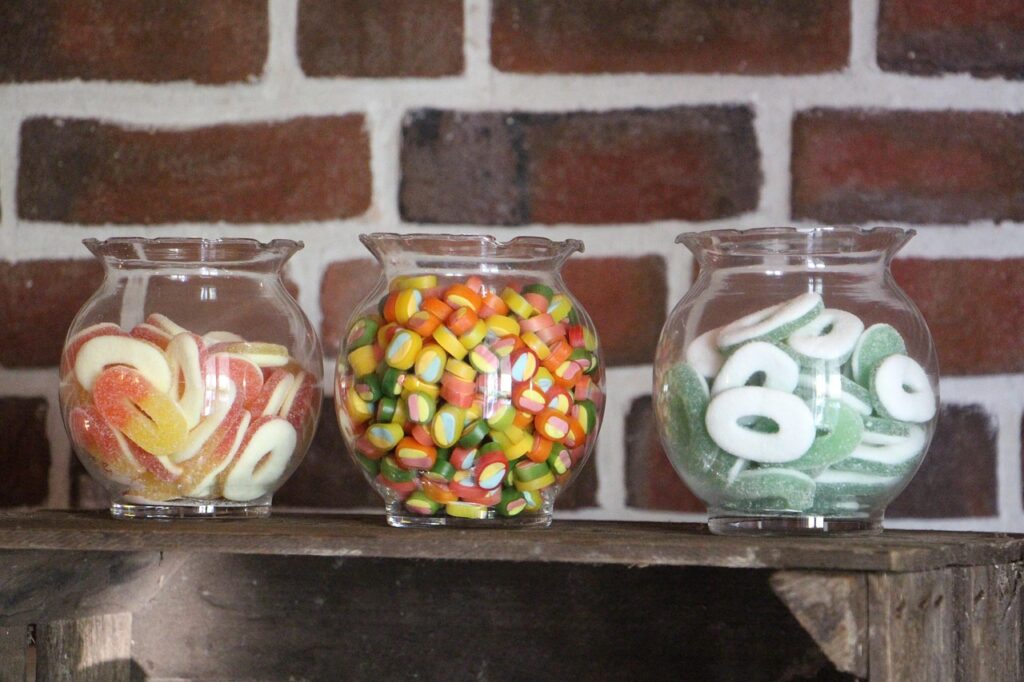
11. **Nestlé Alpine White bar**Nestlé, a company synonymous with deliciousness since 1866, has graced us with countless treats, and for a glorious period, one of its brightest stars was the Nestlé Alpine White bar. This wasn’t just any white chocolate; it was a distinctive white chocolate treat generously stuffed with crunchy almonds. It truly carved out a special place in the hearts of candy lovers and did particularly well all the way up until the 1990s. Its smooth, creamy goodness, made with classic ingredients like cocoa butter, sugar, milk, and a hint of vanillin, was pure bliss.
What truly made the Alpine White bar iconic, especially for those of us who grew up in the ’80s, was its sophisticated vibe. In 1986, Nestlé launched a memorable 30-second TV advert that masterfully positioned it as an ‘adult’ chocolate treat. Imagine this: young, stylish men and women, a stunning backdrop reminiscent of the serene Swiss mountains, and a captivating voiceover describing the ‘creamy white’ of the bar. It was chic, it was aspirational, and it made you feel like you were indulging in something truly special and grown-up.
But here’s a little secret: while it felt like a cutting-edge ’80s luxury, the Nestlé Alpine White bar actually had a much longer history, having been originally released way back in 1948! It proudly held the title of being the ‘first mass-distributed white chocolate in the U.S.,’ which is pretty cool. The marketing genius of the ’80s ads simply gave it a fresh, elevated persona that resonated deeply with the generation.
Fast forward to 2022, and its cultural impact was still so strong that ‘The Tonight Show’ paid homage to that classic ad with a hilarious parody featuring Jimmy Fallon and his team, complete with their own unique take. The comments sections exploded with fans passionately calling for Nestlé to bring the bar back. But despite the heartfelt pleas and enduring nostalgia, the Nestlé Alpine White bar, with its creamy texture and sophisticated imagery, remains a cherished memory, a testament to a white chocolate sensation that truly stood out.
Read more about: Dare to Tread? Exploring the World’s 14 Most Perilous Hiking Trails
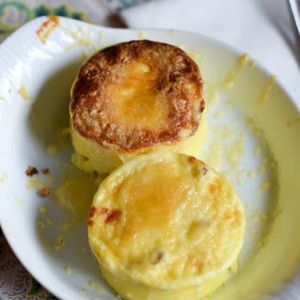
12. **PB Max**Alright, peanut butter lovers, this one’s for you – or rather, for your nostalgic dreams! Mars, the candy giant, introduced the PB Max bar in the late ’80s, around 1989-1990, and it was an instant, undeniable hit. This wasn’t just a candy bar; it was a peanut butter *experience*. Picture this: a hearty, peanut butter-packed treat, layered on a whole grain cookie, and then completely enrobed in a generous coating of rich milk chocolate. It was crunchy, it was creamy, and it delivered that powerful peanut butter punch that so many of us absolutely adore.
Despite its skyrocketing popularity and a devoted fan base that couldn’t get enough of its unique combination of textures and flavors, the PB Max met an early and rather baffling demise in 1994. And the reason? Get ready for a head-scratcher: allegedly, the Mars family, the very people who owned the company, simply ‘disliked peanut butter.’ Yes, you read that right. A multi-million-dollar product, flying off the shelves, was pulled because of a personal preference. It sounds like something straight out of a candy conspiracy theory, doesn’t it?
This decision sent shockwaves through the candy world and left countless fans utterly heartbroken and bewildered. How could something so beloved, so delicious, and so financially successful just vanish? Former Mars executive Alfred Poe even went on record about the Mars family’s supposed aversion to peanut butter, though the family itself has never formally confirmed this quirky anecdote. It just adds to the legend of the PB Max, turning its discontinuation into a mysterious, almost mythical tale.
The PB Max remains a topic of passionate discussion among nostalgic candy enthusiasts. It’s a classic example of a product that had everything going for it – incredible taste, strong sales, and a loyal following – only to be felled by an unforeseen, and frankly, somewhat bizarre, internal corporate decision. It’s a bittersweet reminder that sometimes, even in the sweet world of candy, personal tastes can dramatically alter the course of snack history, leaving us to forever crave what could have been.
Read more about: Navigating the Urban Jungle: The 12 Best Affordable Hybrid SUVs for Over 40 MPG in City Driving
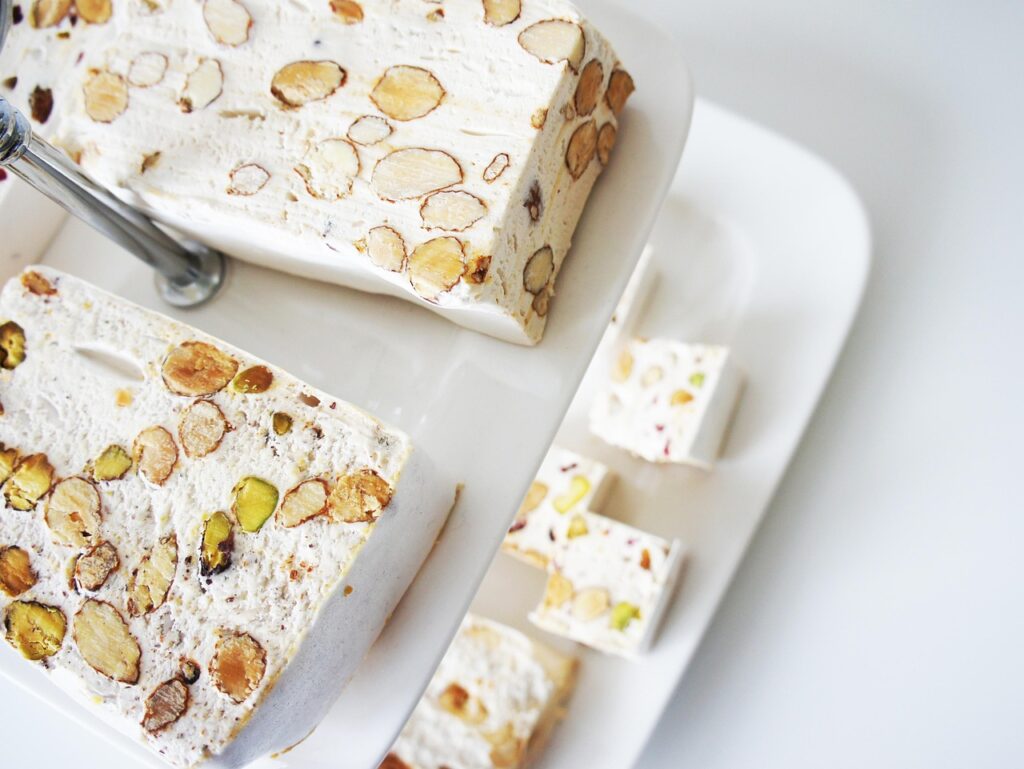
13. **Marathon Bar**Prepare for a journey back to the ’80s, where one candy bar was famous for its incredible length and its promise to stick around for ages: the Marathon Bar! Launched by Mars in the U.S. in 1973, this was no ordinary treat. It stood out with its super distinctive, ‘braided’ shape and an impressive 8-inch length, immediately making it a visual showstopper in the candy aisle. It wasn’t just a snack; it was an endurance test for your taste buds, packed with gooey, chewy caramel and covered in rich milk chocolate.
The Marathon Bar lived up to its name, at least in terms of chewiness! It was a delightfully sticky, pull-apart kind of candy that really made you work for each sweet bite. This unique format and its promise of ‘lasting long’ appealed to many, offering a satisfying, extended chewing experience. For kids, it felt like an endless ribbon of deliciousness, and for adults, it was a fun, playful indulgence that truly stood apart from its more conventional, rectangular competitors.
However, despite its memorable appearance and dedicated fanbase, the Marathon Bar had a relatively short run in the U.S. It was ultimately discontinued in 1981. Why? Apparently, its ‘extra-chewy format’ was not only costly to produce but also quite ‘polarizing’ for consumers. In a crowded candy market, perhaps its distinctiveness was also its Achilles’ heel. It struggled to compete with other caramel bars that offered a quicker, less strenuous chewing experience.
While American fans still mourn its departure and reminisce about its unique braided glory, the good news is that its closest, still-available cousin is the Cadbury Curly Wurly in the U.K. So, if you’re ever across the pond and yearning for that Marathon magic, you know what to look for! But for those of us stateside, the Marathon Bar remains a cherished, albeit discontinued, icon of ’80s candy history, a true testament to how memorable a uniquely shaped treat can be.
Read more about: Prepare for a Quote-Off! We Ranked 14 Legendary Movies Whose Iconic Lines Live Rent-Free in Your Head Forever
14. **Reggie! Bar**Batter up, candy fans, because this next one was a home run! In 1978, Standard Brands (later Nabisco) swung for the fences and introduced the Reggie! Bar, a candy sensation named after the legendary baseball player Reggie Jackson. This wasn’t just a candy bar; it was a piece of sports history wrapped in a chocolatey package. Packed with roasted peanuts, gooey caramel, and all covered in milk chocolate, it was designed to be a grand slam treat, and for a glorious, brief period, it absolutely was.
The Reggie! Bar was initially a massive success, riding high on the fame of its namesake, who was tearing it up with the New York Yankees at the time. Imagine the excitement for young baseball fans: holding a candy bar endorsed by their hero! It was a marketing stroke of genius that combined the thrill of America’s pastime with the irresistible allure of chocolate. For a moment, every bite felt like a championship win, making it a must-have at ballparks and convenience stores alike.
However, like many celebrity endorsements, the novelty eventually began to wear off. The Reggie! Bar was tightly tied to Reggie Jackson’s Yankees era, and as his career evolved and corporate ownership shifted, the candy bar’s momentum began to fade. It was a classic case of a product being *too* closely associated with a specific moment in pop culture. Once that moment passed, the bar struggled to maintain its initial explosive popularity, finding it hard to stand on its own two feet.
Sadly, the Reggie! Bar was discontinued in 1981, making it a relatively short-lived phenomenon, though it did see a brief revival in 1993. Today, it stands as a fascinating relic, not just of candy history, but of sports marketing and pop culture of the late ’70s and early ’80s. For collectors and those who remember it, the Reggie! Bar remains a sweet, nutty, caramel-filled reminder of a time when candy and baseball truly hit it out of the park. It’s a taste of victory, long since retired from the shelves.
Phew, what a bittersweet journey down the candy aisle of yesteryear, right? From the prehistoric crunch of Dina-Sour Eggs to the sophisticated snap of an Alpine White bar, and the legendary chew of a Marathon, these treats truly were the superstars of our ’80s childhoods. They filled our pockets, fueled our play, and left an indelible mark on our memories, each one a tiny, sugary time capsule. While their wrappers may be gone and their flavors mere echoes in our minds, the stories behind these vanished confections remind us that some sweet things are too good to ever be truly forgotten. So here’s to the lost, the loved, and the forever legendary candy bars that proved the ’80s really were the sweetest decade!

